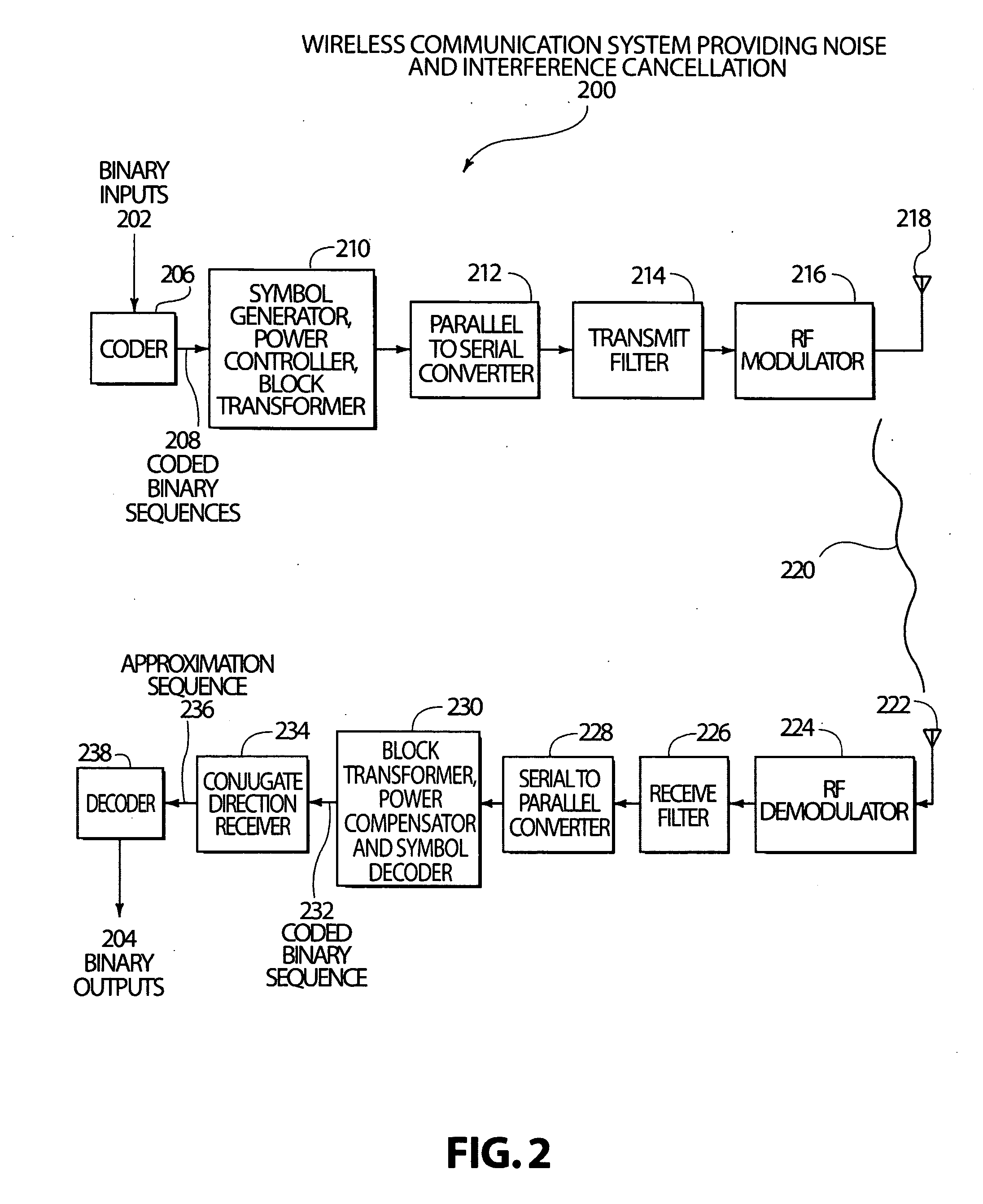Code, signal and conjugate direction design for rapidly-adaptive communication receivers and electromagnetic, acoustic and nuclear array processors
a communication receiver and rapidly adaptive technology, applied in the direction of transmission, electrical equipment, etc., can solve the problems of reducing the real-time or lab-time speed at which the signal processor can run and produce, and affecting the efficiency of the signal processing. , to achieve the effect of reducing the complexity of the information system, reducing interference and noise, and good transmitting signal
- Summary
- Abstract
- Description
- Claims
- Application Information
AI Technical Summary
Benefits of technology
Problems solved by technology
Method used
Image
Examples
application examples
III. Application Examples
[0148] Application examples are chosen to demonstrate the fast converging property of the reduced-rank LMMSE MUD for multi-rate CDMA systems. We design a multi-rate CDMA system with variable spreading length sequences to accommodate multi-rate data traffic. We choose a system with the total number of users K=8. There are two user groups among all active users, K0=4 low-rate (LR) users and K1=4 high-rate (HR) users. In all examples, we assume that a total of K=8 distinct normalized Gold codes of length L=15 are available for constructing signatures for LR users and HR users. In all examples, we choose to use Gold codes g1, . . . , g4 for the LR user group and g5, . . . , g8 for the HR user group.
In the first example, we assume that the ratio between the data rates is M=2. Hence, within the processing interval T0, there are a total of Kvirtual=K0+MK1=12 virtual users. Hence, the signature matrices for all the Kvirtual virtual users (including the LR and HR u...
PUM
 Login to View More
Login to View More Abstract
Description
Claims
Application Information
 Login to View More
Login to View More - R&D
- Intellectual Property
- Life Sciences
- Materials
- Tech Scout
- Unparalleled Data Quality
- Higher Quality Content
- 60% Fewer Hallucinations
Browse by: Latest US Patents, China's latest patents, Technical Efficacy Thesaurus, Application Domain, Technology Topic, Popular Technical Reports.
© 2025 PatSnap. All rights reserved.Legal|Privacy policy|Modern Slavery Act Transparency Statement|Sitemap|About US| Contact US: help@patsnap.com



